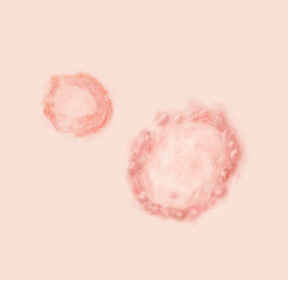When Your Child Has Ringworm
When Your Child Has Ringworm

Ringworm is a fungal infection that affects the skin. It spreads from person to person. Ringworm appears as a round or oval patch. It's smooth in the center with a scaly, red border. The most commonly affected areas are the scalp, feet, nails, and groin. It's called ringworm because of the way it looks. It's not caused by a worm. Ringworm is not serious and can usually be treated at home.
What causes ringworm?
Ringworm is caused by certain kinds of fungus. These are normally found in the soil and on the skin of humans and animals.
How is ringworm spread?
Ringworm can be spread in the following ways:
-
Touching the rash on an infected person
-
Touching an item such as a comb, towel, or hat that has been contaminated by an infected person
-
Contact with an infected animal
What are the symptoms of ringworm?
Symptoms vary depending on the area of the infection, but can include:
-
Round patch with a scaly, red border which looks like a red ring
-
Itching in the affected area(s)
-
Bald patches with scalp infections
-
Discolored nails with nail infections
How is ringworm diagnosed?
Ringworm is diagnosed by how it looks. To get more information, the healthcare provider will ask about your child’s symptoms and health history. Your child will also be examined. You will be told if any tests are needed. Your healthcare provider may also do a painless skin scraping to look at the scales under the microscope, or send it to the lab for further testing.
How is ringworm treated?
Ringworm on the body generally goes away within 4 or 6 weeks of treatment.
You can treat your child’s ringworm by:
-
Applying over-the-counter topical antifungal cream to the affected areas as directed by the healthcare provider. Before and after each application, wash your hands with warm water and soap.
-
Washing your child’s hair and body with antifungal shampoo and body wash.
-
Ringworm on the scalp must be treated with oral medicine prescribed by the healthcare provider. Make sure that your child takes all of the medicine, even if symptoms improve.
When to call your healthcare provider
-
Symptoms that don't improve within 6 to 8 weeks of starting treatment
-
Signs of infection such as pus, swelling, or drainage in the affected areas
How can you prevent the spread of ringworm?
Follow these steps to keep your child from passing ringworm on to others:
-
Teach your child to wash his or her hands with soap and warm water often. Handwashing is especially important before eating or handling food, after using the bathroom, and after touching the affected areas.
-
Don't let your child share personal items such as hats, combs, towels, or clothing with others.
-
Remind your child to not be in close contact with others at school or at daycare, if there are infected children there.
- Find out if your pets have it and treat them. Your dogs or cats may have scaly, itchy, hairless areas that should be treated right away.
Updated:
September 17, 2019
Reviewed By:
Michael Lehrer MD,Rita Sather RN,Raymond Kent Turley BSN MSN RN